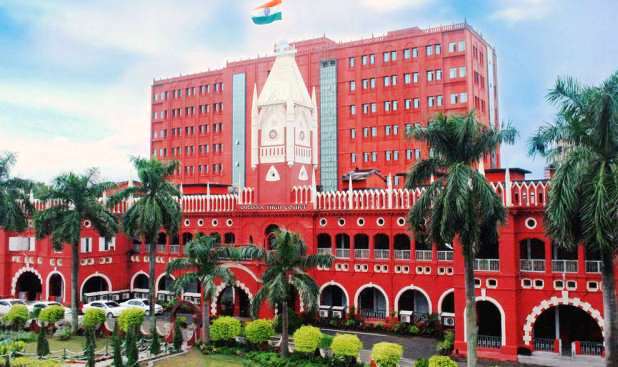Suman Dash Bhattamishra & Rangin Pallav Tripathy
In a recent judgement, the Orissa High Court has affirmed the right of non-heterosexual couples to live together. The court also declared that the rights of a woman in such a relationship will be safeguarded under the Protection of Women from Domestic Violence Act, 2005. In doing so, the court backed the rights of the couple to live a dignified life, under Article 21 of the Constitution and furthered the spirit of landmark cases such as NALSA versus Union of India (gender identity) and Navtej Singh Johar versus Union of India (decriminalisation of homosexuality). However, what could have been a historic judgement remains progressive only to an extent.
The case arose from a writ of habeas corpus filed by a 24-year old transgender for reuniting him with his live-in partner Rashmi (fictitious name), who was forcibly separated from him by Rashmi’s mother and uncle. Rashmi’s family members were also forcing her to get married against her will and in violation of her sexual orientation. The petitioner claimed that the recognition of live-in relationships under the Protection of Women from Domestic Violence Act is not confined to heterosexual relationships and even though they could not marry under the current legal framework, they have attained majority have the right to live together. While the court granted relief, there are certain significant aspects that prevent it from becoming a path-breaking judgement.
To begin with, the court empathises with Rashmi’s family for their inability to accept her relationship and seems to be validating patriarchal notions about a woman’s freedom to choose her life partner. The court talks about how Rashmi’s decision will affect her mother and her younger sister who have to live in the society and that the girl’s decision to settle down with a person of her choice is viewed by the family with trepidation. The court highlights Rashmi’s nature of choice to justify the attitude of her family and makes this a ground to remind Rashmi about her duties towards her family. These observations by the court show its reticence in treating non-heterosexual relationships at par with heterosexual relationships.
Further, by normalising the rejection of love-marriages and homosexual relationships, the court appears to have missed an opportunity to establish the pre-eminence of constitutional rights over social prejudices. As an institution designed to protect constitutional rights, the court is expected to steer clear of any unwarranted validation of archaic social morality. It ought to condemn the prevailing social biases and prejudices against sacred constitutional values of dignity and equality of human beings.
One also wonders why the court deliberates on the expectation of Rashmi’s mother that her daughter would ‘change her mind.’ It is difficult to overlook the fact that, by doing so, the court passively legitimises the mother’s belief that sexual orientation is a matter of choice and that Rashmi may choose to become heterosexual in future.
The court states that the family of Rashmi will have a right to visit her in the residence of the petitioner. Both Rashmi and the petitioner are adults with full constitutional rights to live their life with dignity and privacy. They have complete autonomy to decide who can and who cannot visit their residence. While the court may have had its sympathies towards Rashmi’s family, one feels that there is no constitutional foundation for such a direction to be passed.
The court cannot lose sight of the serious problems faced by vulnerable victims such as Rashmi and the petitioner. It must be noted that Rashmi’s family took her away forcibly from the house where she lived with her partner. In a situation such as this, the safety of the victims and their well-being are more important than the sentiments of the perpetrators. It could be argued that the court’s job is only half-done when the declaration of rights is made conditional to such riders.
The illegal nature of the respondents’ behaviour that actually amounts to criminal conduct has been sanitised while the need for the petitioner’s protection has been diluted. It is also interesting to note that these directions have been passed even though no counter was filed by Rashmi’s family praying for any specific relief.
While Rashmi and the petitioners are the clear victims in the case, the court has throughout the judgement placed greater emphasis on their obligations, which are not an issue. The court reminds Rashmi about her obligations under the Maintenance and Protection of Parents and Senior Citizens Act 2007 even though there is no counter-affidavit that she has been neglecting her mother. As a response to the concerns aired by Rashmi’s family, the court directs the petitioner to take good care of her. This, even as there is no material on record to suggest any ill-treatment of Rashmi by the petitioner.
There could be attempts to sugar-coat the criminal nature of the respondent’s conduct and instead offer a sanitised account of their behaviour. The court states that it hopes Rashmi and the petitioner do not cause any worry to their families and do not give the society an excuse to raise an accusing finger at them.
One gets a feeling that while the court has found the law to be on the side of the petitioner, its own sympathies are not. The reason of law seems clouded by the validation of illegitimate social sentiments. Would the tone of the judgement have been the same if the case involved a heterosexual couple? Because of this, what could have been a truly path-breaking judgement falls short of its potential.
The writers are faculty members at National Law University, Odisha. Suman focuses on issues of gender, criminalisation and access to justice. Rangin focuses on issues of civil liberties and accountability of constitutional functionaries.
